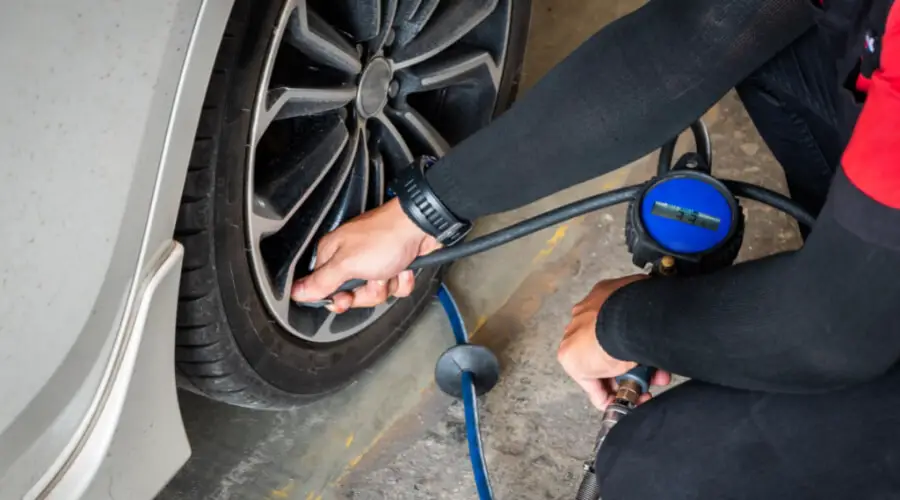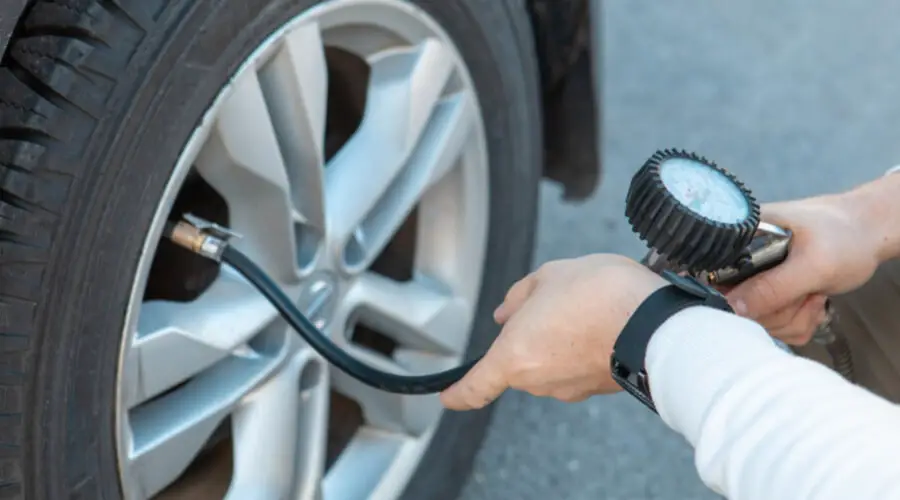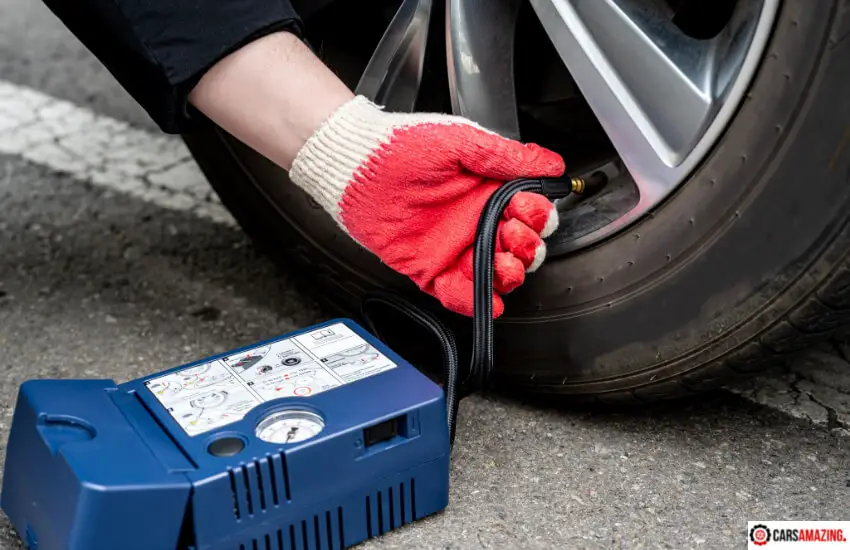Last Updated on February 12, 2023 by Leepu Da Maxim
The recommended tire pressure of your 2010 Toyota corolla varies depending on the tire size. For size P195/65R15 89S, the recommended tire pressure is 30PSI for both front and rear tires. For sizes P205/55R16 89H and P215/45R17 87W, it is 32PSI for both front and rear tires.
Key Takeaways
- You will always find the recommended tire pressure on the vehicle’s manual or on the tire information placard located on the driver’s side doorjamb
- Driving around with low tire pressure is dangerous and lowers your vehicle’s fuel efficiency
- It is always recommended to maintain the standard tire pressure to ensure a safe and efficient driving experience
What Should Be The Tire Pressure On A Toyota Corolla

The tire pressure that your Toyota corolla 2010 needs is 30 PSI for size P195/5R15 89S on all tires and 32PSI for other sizes. This number is essential for your safety as you drive and your tire’s health. The correct air pressure keeps the tread even, thus helping the vehicle achieve the highest possible stability.
Your vehicle’s weight plays a huge role in determining how much air the tires require. When looking to determine the recommended PSI, look inside the car door; a sticker displays this information. Your tire also has a number, but it is not the recommended PSI for your vehicle; instead, it is the maximum pressure the tire will hold.
How To Check Tire Pressure

Your 2010 Toyota corolla features a tire pressure monitoring system (TPMS) that has a screen displaying the pressure in each tire. You can also check the tire pressure manually by using a pressure gauge. The process is relatively straightforward; follow these steps if you prefer to do it manually:
1. Park the car on a level surface
2. Remove the cap on the valve of the tire
3. Use a tire pressure gauge to press firmly over the valve, and the gauge will show a reading.
If using a traditional gauge, ensure you place it in the right direction: you will hear air seeping out instead of getting a reading when placed wrongly. In modern meters, the tool to let out air is located separately from that of measuring tire pressure.
How To Add Air To Tires
If your TPMS light comes on while driving and stays on even after you start the car, you will need to go to the gas station to inflate the tires to the recommended PSI. Here’s how to inflate the tires of your 2010 Toyota corolla before resetting the tire pressure light.
1. Park the car at a level surface
2. Engage the parking brake
3. Turn the key to the on position without cranking the car
4. Remove the cap of the valve stem on the tire
5. Use an air compressor and place the hose over the valve to insert air and inflate the tire.
After a few seconds, the hazard lights should flash and then go off once you reach the proper PSI. If you put too much air, the horn will beep once, and the hazard will flash thrice. The tire pressure light should go off after inflating your tires to the proper PSI. You can turn it off if it doesn’t by resetting the TPMS.
How Do You Turn Off The Tire Pressure Light On The 2010 Toyota Corolla?
Before turning off the tire pressure light, always ensure all the tires are inflated to the correct air pressure. There are various ways to reset the TPMS and turn the tire pressure light off. After you are sure that the tires are inflated correctly, follow any of these methods to reset the tire pressure light:
1. Drive the car for about ten minutes or more at a speed of 50MPH. After the drive, turn the car off and then back on. The system should reset itself after you turn the car back on.
2. Without starting the engine, you can also turn the key to the “on” position. Locate the TPMS reset button under the steering and hold it until the light flashes thrice. Crank the car and allow 20 minutes for the system to refresh.
3. When adding air to your tires, inflate them with an extra 2-3 PSI, then let out the air. After letting out air, inflate again to the correct PSI, and this will reset the sensors
4. Turn the vehicle off, open the hood, and disconnect the positive battery cable (with a red cap). Turn the key to the on position, then hold the horn for 3-5 seconds to let out any power that is still left in the battery, then reconnect the battery to reset the TPMS
How Often Should You Put Air In Your Tires?
There isn’t a schedule to observe inflating your tires, but it’s a good practice to check the PSI every two weeks or at least once a month. If you find one tire is low on pressure, it is time to add more air. Your tire pressure also changes during colder temperatures, especially driving at relatively high speed. The cold weather causes the tire pressure level to go down quickly.
When Is The Best Time To Check Tire Pressure?
Mechanics suggest checking the air in your tires when they are cols: preferably three hours after parking your car. You could also choose to check them before you leave your home in the morning. Always ensure you check all the tires, including the spare tire, to ensure they are correctly maintained.
Can You Drive With Low Tire Pressure?
You can drive with low tire pressure, but we highly advise drivers against it. Lower tire pressure is a risk to your car’s well-being and safety. When your tires have low pressure, they are more prone to blowouts and less traction. You are more likely to lose control of your vehicle while operating under these conditions. When the low-pressure light comes on, drive at slower speeds t the gas station to inflate the tires.
In conclusion
Tire pressure is crucial every time you drive your 2010 Toyota Corolla. Always ensure all the tires have a PSI of 30 for P195/65R15 89S and 32 for P205/55R16 89H and P215/45R17 87W. The TPMS on the dashboard of your Toyota corolla makes checking tire pressure and adding air to the tires smooth and easy. You won’t have to wait for the light to come on for you to check your tire pressure. You can make checking your tire pressure a routine at least once a month.

Hi, I’m Leepu Da Maxim, a dedicated car enthusiast with over 10 years of experience in this field, and I’m thrilled to share my passion and expertise with fellow car enthusiasts like you. My journey began in my hometown West Jordan, Utah, where my fascination with the mechanics and design of cars sparked at a young age. Over the years, this passion has evolved into a commitment to providing accurate, insightful, and engaging information about all things automotive through CarsAmazing.
